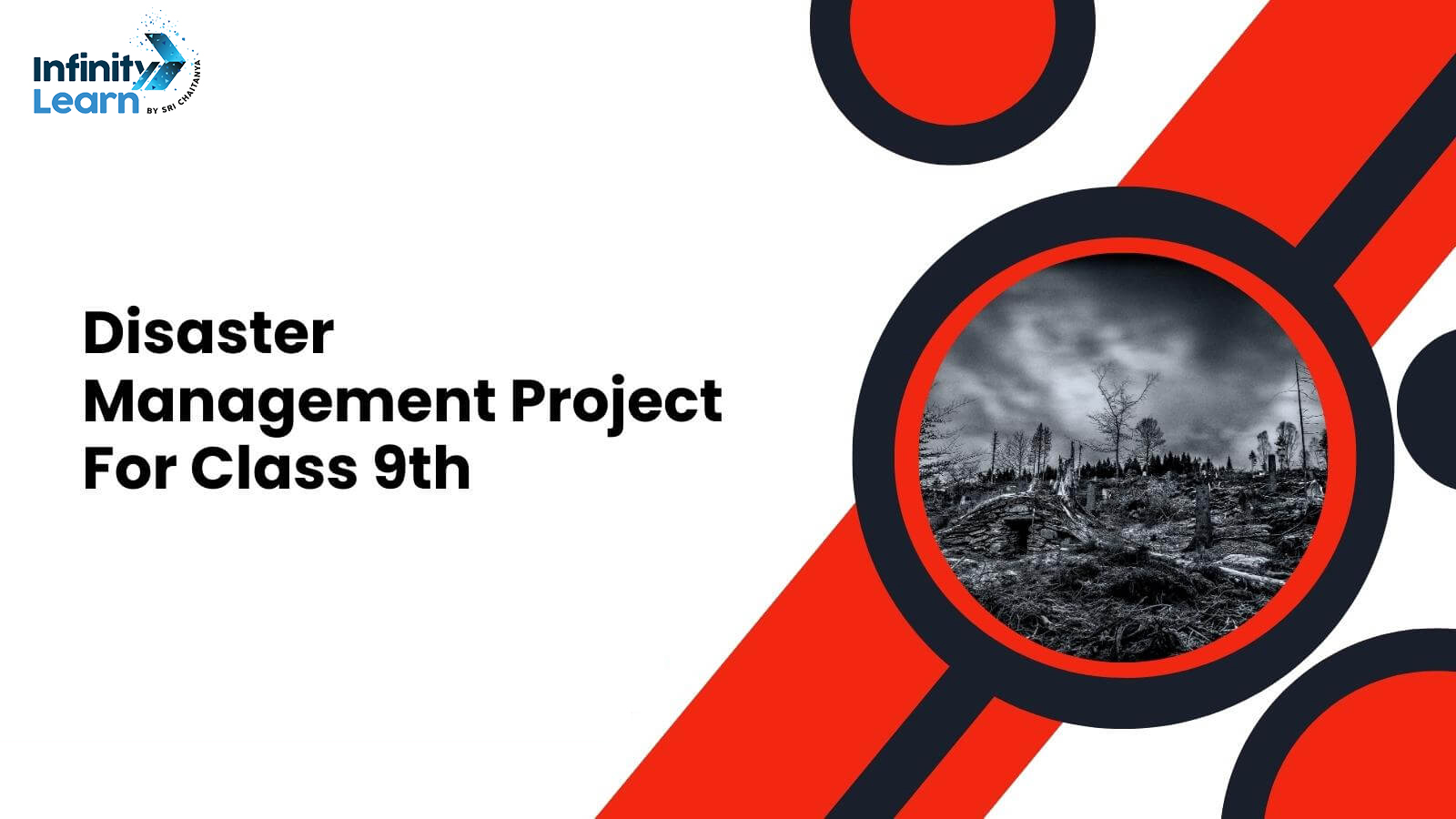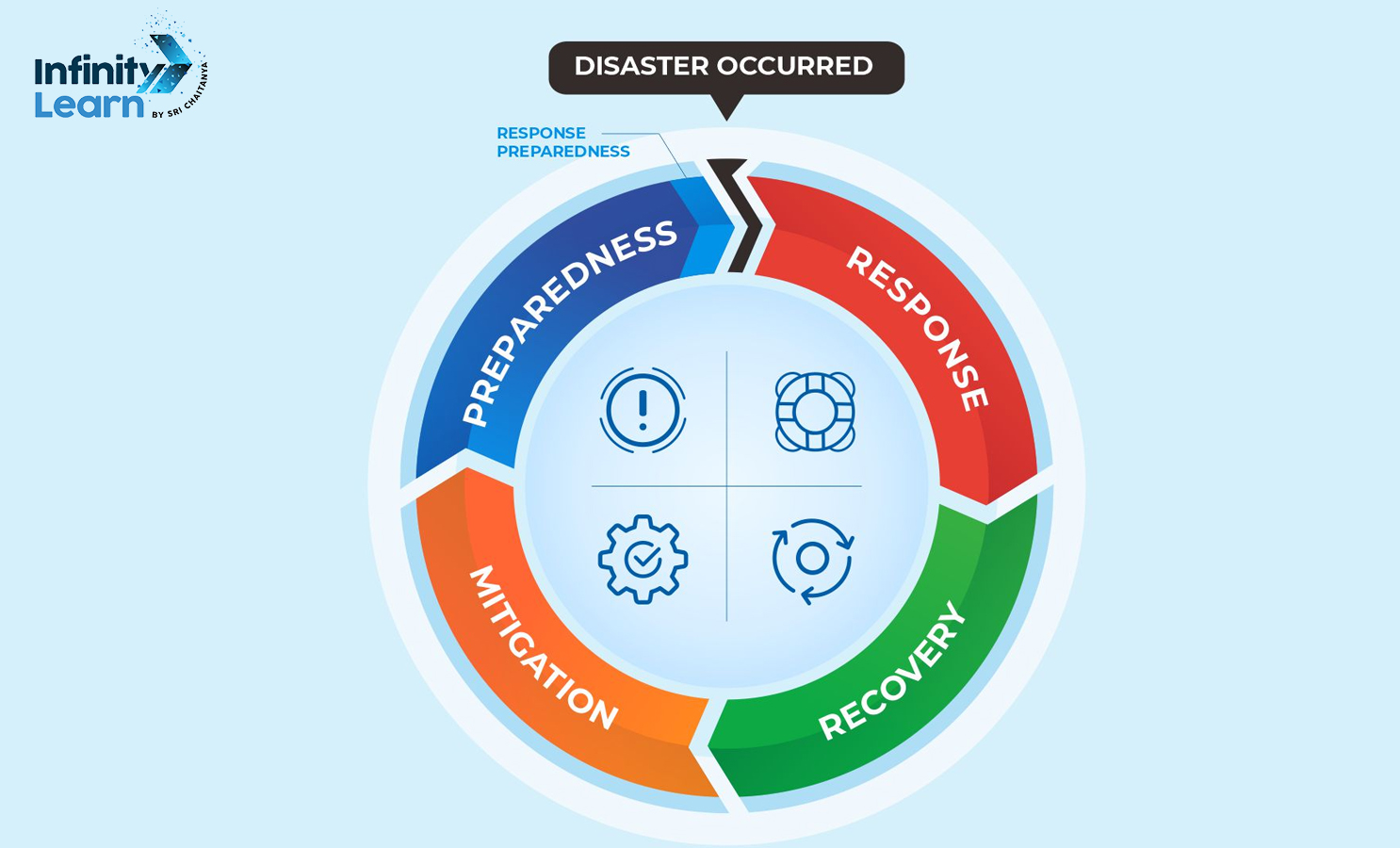Table of Contents
Disaster Management Project Class 9: Disaster Management refers to a comprehensive framework encompassing planning, coordination, and execution of strategies aimed at mitigating risks during disasters and effectively addressing their aftermath. It involves proactive measures to minimize the impact of both natural and man-made calamities through preparedness, response, and recovery efforts. Central to disaster management is the assurance of timely rescue and relief operations to safeguard lives and alleviate suffering.

What is Disaster Management and Disaster Management Project Class 9?
Disaster Management, especially important for Class 9 projects, is all about getting ready for and dealing with big problems that happen suddenly. These problems can be because of nature, like floods or earthquakes, or because of people, like accidents or fights. In Disaster Management, we learn how to plan ahead for these problems, organize what to do when they happen, and help everyone who’s affected. It’s like having a plan for when things go wrong, so we can keep ourselves and our communities safe. So, in a disaster management project class 9, students will learn how to prepare for disasters, what to do during them, and how to help afterwards.
The International Federation of Red Cross and Red Crescent Societies says a disaster happens when something risky affects people who are already vulnerable. So, disaster management is about helping those who need it the most during tough times.
Disaster Management Project PDF Class 9
A Disaster Management Project for Class 9 PDF likely entails educational material or a practical project aimed at teaching ninth-grade students about disaster management. Topics may cover understanding different types of disasters, creating emergency plans, and learning about mitigation strategies. The PDF may include information on how to respond to disasters, stay safe during emergencies, and help others in need. It could also provide guidelines for conducting research, creating presentations, or participating in simulations related to disaster management.
Implementing a Project on Disaster Management

To engage students in hands-on learning, schools can incorporate a project-based approach to natural disaster management. Here’s a structured framework for disaster management project class 9:
- Selecting a Natural Disaster: Choose a specific type of natural disaster as the focus of the project on disaster management (e.g., earthquake, flood, wildfire). Encourage students to research its characteristics, historical occurrences, and potential impacts on their region.
- Risk Assessment: Guide students in conducting a risk assessment for the chosen natural disaster. Using maps, data, and case studies, help them identify vulnerable areas, populations, and infrastructure at risk.
- Preparedness Planning: Assist students in developing a comprehensive disaster preparedness plan tailored to the selected natural disaster. This plan should include preventive measures, evacuation procedures, emergency communication channels, and resource allocation strategies.
- Community Outreach: Encourage students to raise awareness about natural disaster preparedness within their school and community. This could involve organizing workshops, creating informational materials, or inviting guest speakers from relevant organizations.
- Simulation Exercise: Conduct a mock disaster drill to allow students to simulate emergency response scenarios based on their preparedness plans. This practical exercise will help them understand the challenges and dynamics of real-life situations.
- Reflection and Improvement: Facilitate a debriefing session after the simulation exercise, where students can reflect on their experiences and identify areas for improvement in their preparedness plans. Encourage them to brainstorm innovative solutions and strategies for future readiness.

How to Create Project File on Disaster Management for Class 9
Creating a class 9 project on disaster management is a great way to learn about different types of disasters and how we can prepare for them. Here’s a simple guide to help you make an impressive project file.
- Choose a Type of Disaster: Start by picking one type of disaster to focus on, like earthquakes, floods, cyclones, or wildfires. This will make it easier to research and stay focused.
- Write an Introduction: Begin your file with a brief introduction about disaster management. Explain what it is and why it’s important.
- Explain Causes and Effects: Write about the causes of the chosen disaster. For example, what causes floods or earthquakes? Then, mention the effects, like damage to buildings or impact on people.
- List Safety Measures: This is important! List some ways to stay safe before, during, and after the disaster. You can include tips like emergency kits, safe evacuation, or how to help others.
- Use Diagrams and Pictures: Add some simple diagrams or pictures to make your project more interesting. For example, you could draw a map of disaster-prone areas or show a basic emergency kit.
- Include Real-Life Examples: Add a few examples of recent disasters, like a major flood or earthquake that happened recently. This makes your project more relevant and realistic.
- Add a Conclusion: Summarize what you learned and why disaster management is essential. Write a few sentences about how everyone should be prepared.
- Neat Presentation: Make sure your project is neat and well-organized. Use headings, underline key points, and check your spelling.
This structure will help you create a complete and informative project file on disaster management. Good luck!
Types of Disaster Management Project for Class 9
- Hazard Mitigation Projects: These projects aim to reduce disaster impact by lowering risk or lessening damage. Examples: levees prevent flooding, erosion control controls damage.
- Emergency Response Plans: These plans outline how communities or organizations will respond to disasters, including evacuation procedures, provision of essential supplies, and medical care.
- Recovery Plans: These plans detail the steps for post-disaster recovery, including rebuilding infrastructure, providing financial aid, and assisting affected individuals in returning to normalcy.
Natural Disasters Management Project for Class 9
Natural disasters pose significant threats to life and property. Disaster Management Projects for Class 9 aim to mitigate their impact effectively. Examples include earthquakes, cyclones, floods, and volcanic eruptions.
- Earthquakes: Rapid and intense ground shaking caused by the movement of the earth’s crust, often resulting in widespread destruction and secondary disasters such as tsunamis.
- Cyclones: Intense spinning storms originating over oceans in tropical regions, bringing forth destructive winds and heavy rainfall.
- Floods: Occur when an excess of water inundates land, disrupting daily activities and causing damage. Floods can result from various factors, including heavy rainfall, storm surges, or seismic events.
- Volcanic Disasters: Triggered by volcanic activities, including lava flows, mudflows, and pyroclastic flows, which can cause extensive damage and pose significant risks to human life.
Man-made Disasters Management Project for Class 9
Man-made disasters present unique challenges in disaster management. Disaster Management Projects for Class 9 address issues such as road accidents, building collapses, and terrorist attacks.
- Road Accidents: Often caused by careless driving, inexperienced drivers, and inadequate road maintenance, leading to significant injury and loss of life.
- Building Collapses: Result from substandard construction practices and lax enforcement of safety regulations, particularly prevalent in regions with rapid urbanization.
- Terrorist Attacks: Deliberate acts of violence targeting civilians, infrastructure, or institutions, posing grave threats to public safety and security.
Tips for Developing Disaster Management Project for Class 9
- Risk Identification: Conduct a thorough hazard analysis to identify potential risks and hazards within your community or organization.
- Risk Mitigation: Develop plans to reduce identified risks, which may include evacuation protocols, infrastructure improvements, or community preparedness initiatives.
- Emergency Preparedness: Educate individuals on emergency response procedures, including evacuation drills, first aid training, and disaster preparedness kits.
- Relief Coordination: Establish a robust system for coordinating relief efforts, including the setup of command centers and effective communication channels.
Disaster Management Projects for Class 9 are vital for protecting communities and organizations from disasters’ harmful impacts. By understanding the nuances of disaster management and implementing proactive measures, students can contribute to building resilient and disaster-ready societies. Together, we can navigate through the challenges posed by disasters and emerge stronger than before.
Also Refer:
FAQs on Disaster Management Project Class 9
What is disaster management class 9 for projects?
Disaster management for Class 9 projects typically involves studying various aspects of disaster preparedness, response, and mitigation. Students may explore different types of disasters, their causes, effects, and methods to minimize their impact on communities.
How to make a project file class 9?
To make a project file for Class 9, students can follow these steps: Choose a topic related to the curriculum, such as disaster management. Research the chosen topic thoroughly, gathering information from textbooks, reliable websites, and other sources. Organize the collected information into sections, including an introduction, objectives, methodology, findings, conclusion, and bibliography. Use clear and concise language, along with appropriate diagrams, charts, and illustrations to enhance understanding. Proofread the project file for any errors in grammar, spelling, or formatting before submission.
Which topic is best for disaster management?
The best topic for disaster management depends on various factors, including the interests of the student, the availability of resources, and the relevance to the local context. Some popular topics include natural disasters like earthquakes, floods, hurricanes, or human-made disasters such as industrial accidents or pandemics.
परियोजनाओं के लिए आपदा प्रबंधन कक्षा 9 क्या है?
कक्षा 9 के परियोजनाओं के लिए आपदा प्रबंधन का मुख्य उद्देश्य विभिन्न प्रकार की आपदाओं का अध्ययन करना, उनके कारणों, प्रभावों, और समुदायों पर उनका प्रभाव कम करने के तरीकों का अध्ययन करना होता है।









